Contents
1. Author - William Faulkner
2. Summary of "A Rose for Emily"
3. Background of " A Rose for Emily"
4. Character Analysis Based on
몷A Rose for Emily몸
5. Speculations
6. Critical Essay
1. Author : William Faulkner
William Faulkner was born in 1897 from an old southern family and grew in Oxford, Mississippi. He joined the Canadian and the British, Royal Air Force during the First World War. He then studied for a while at the University of Mississippi. In 1940, Faulkner published the first volume of the Snopes trilogy. The reivers, his last piece of literature, with many similarities to Mark Twains Huckleberry Finn, appeared in 1962, the year of Faulkners death.
Faulkner was born William Falkner (no "U") in New Albany, Mississippi, and raised in and heavily influenced by that state, as well as the general ambience of the South. His great-grandfather, William Clark Falkner, was an important figure in the history of northern Mississippi who served as a colonel in the Confederate Army, founded a railroad, and gave his name to the town of Falkner in nearby Tipah County. Perhaps most importantly, he wrote several novels and other works, establishing a literary tradition in the family. Eventually, Colonel Falkner was the model for Colonel John Sartoris in his great-grandsons writing.
It is understandable that the younger Falkner was influenced by, and drew on, the history of his family and the region. Mississippi marked his sense of humor, his sense of the tragic position of Blacks and Whites, his keen characterization of usual Southern characters and his timeless themes, one of them being that fiercely intelligent people dwelled behind the facades of good old boys and simpletons. The definite reason for Faulkners change in the spelling of his last name is still unknown, but possibilities include adding it to appear more British when entering the RAF, adding it so his name would come across as more aristocratic, or even keeping a misspelling that an early editor had made.
Although Faulkner is heavily identified with Mississippi, he was living in New Orleans in 1925 when he wrote his first novel, Soldiers Pay. The small house at 624 Pirates Alley, just around the corner from St. Louis Cathedral, is now the premises of Faulkner House Books, and also serves as the headquarters of the Pirates Alley Faulkner Society.
Faulkners most celebrated novels include The Sound and the Fury (1929), As I Lay Dying (1930), Light in August (1932), The Unvanquished (1938), and Absalom, Absalom! (1937). Faulkner was a prolific writer of short stories: his first short story collection, These 13 (1932), includes many of his most acclaimed (and most frequently anthologized) stories, including "A Rose for Emily," "Red Leaves," "That Evening Sun," and "Dry September." In 1931, in an effort to make money, Faulkner crafted Sanctuary, a sensationalist "pulp fiction"-styled novel. Its themes of evil and corruption (bearing Southern Gothic tones), resonate to this day. A sequel to the book, Requiem for a Nun, is the only play that he has published. It includes an introduction that is actually one sentence spanning more than a page. He received a Pulitzer Prize for A Fable, and won a National Book Award (posthumously) for his Collected Stories.
Faulkner was also an acclaimed writer of mysteries, publishing a collection of crime fiction, Knights Gambit, that featured Gavin Stevens (who also appeared in Light in August, Go Down, Moses, The Town, Intruder in the Dust, and the short story Hog Pawn), an attorney, wise to the ways of folk living in Yoknapatawpha County. He set many of his short stories and novels in his fictional Yoknapatawpha County, based on?and nearly identical to in terms of geography?Lafayette County, of which his hometown of Oxford, Mississippi is the county seat; Yoknapatawpha was his very own "postage stamp" and it is considered to be one of the most monumental fictional creations in the history of literature. His former home in Oxford, Rowan Oak, is operated as a museum by the University of Mississippi.
In the later years Faulkner moved to Hollywood to be a screenwriter (producing scripts for Raymond Chandlers The Big Sleep and Ernest Hemingways To Have and Have Not, both directed by Howard Hawks). Faulkner started an affair with Hawks secretary, Meta Carpenter.

- 오늘 본 자료가 없습니다.
- 프로페셔널의 조건 - 단순한 직업 지침서를 넘어 삶의 방향과 가치관을 제시하는 철학 서적(A+독후감)
- 채식주의자 - 잔혹함 속에서 피어나는 아름다움과 희망, 우리 삶에 깊은 메시지를 전하는 감동적인 소설(A+독후감)
- 오베라는 남자(프레드릭 배크만) - 삶의 의미, 소통의 중요성, 인간관계, 용기, 희망 등에 대한 메시지를 전달하며, 우리 삶에 큰 영감을 주는 책(+A독후감)
- `어떻게 원하는 것을 얻는가 - 협상의 기본 원칙과 실용적인 전략을 제시하며, 성공적인 협상을 위한 필수 가이드 (독후감A+)
- 프레임 - 우리가 세상을 바라보는 방식에 대한 새로운 시각을 제시하는 흥미롭고 유익한 책(최인철, A+독후감)
해당 정보 및 게시물의 저작권과 기타 법적 책임은 자료 등록자에게 있습니다. 위 정보 및 게시물 내용의 불법적 이용,무단 전재·배포는 금지되어 있습니다. 저작권침해, 명예훼손 등 분쟁요소 발견 시 고객센터에 신고해 주시기 바랍니다.



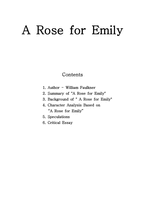
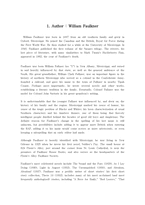
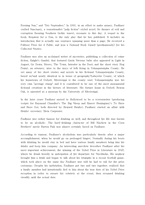
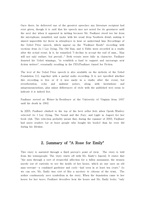
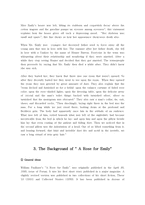
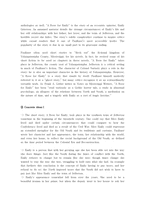

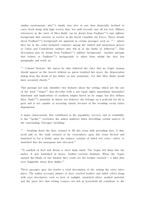
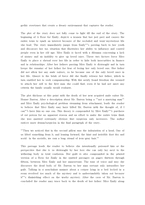
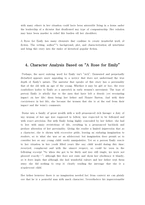




 분야
분야

